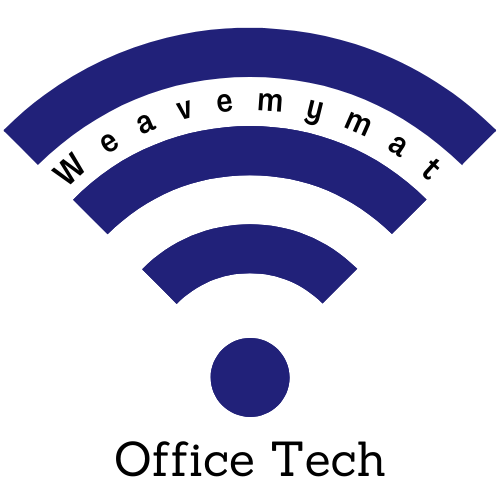Projection technology has come a long way, playing a significant role in modern visual media. Over the years, several key technological advancements in projection have transformed the way we experience media, paving the way for more engaging and immersive visual experiences. This article aims to explore some of these innovations, shedding light on how they have revolutionized projection and subsequently reshaped the landscape of visual media.
One game-changing technological breakthrough in projection systems has been the advent of digital technology. By redefining traditional analog processes, digital advancements have facilitated the creation of increasingly powerful projection systems. These systems are capable of providing stunning, high-resolution visuals. The precise control and manipulation of light provided by digital projectors have given artists, filmmakers, and viewers the unprecedented opportunity to fine-tune visual aspects according to their preferences.
Another significant development worth mentioning is the emergence of high-performance computers and graphics processing units (GPUs). These technologies have enabled projection devices to render complex, visually spectacular imagery in real-time, thus empowering creators to push the boundaries of what is possible with projected visual content. Coupled with advancements in network infrastructure, this has allowed for the seamless transmission of media, paving the way for the integration of projection into various aspects of our lives.
Colin wrote this!
writer/editor at weavemymat.com

An avid technologist, having spent many years working in technical industries, and specializing in all kinds of tech stuff.
Check out more about him here!

Evolution of Projection Technology
Early Innovations
The development of projection technology has come a long way since its inception. One of the earliest innovations in projection was the creation of the magic lantern in the 17th century, which utilized a light source and lenses to project images on a surface. This paved the way for numerous advancements in the field of optical projection.
In the 20th century, the invention of the cathode ray tube (CRT) marked a significant milestone in projection technology. The CRT enabled the display of moving pictures by way of an electron beam, which produced images on a phosphor screen. This led to the proliferation of televisions and the eventual development of video projectors.
Transition to Digital
The transition to digital projection began with the advent of liquid crystal display (LCD) technology in the 1980s. LCD projectors used a combination of mirrors and prisms to project images onto a screen, resulting in brighter and more colorful displays than their CRT counterparts. Digital art has seen significant growth thanks to the advancements in this technology.
Another important development was the introduction of digital light processing (DLP) technology in the 1990s. DLP projectors use digital micromirror devices (DMDs) to manipulate light and create high-quality images. The small size and efficiency of DLP projectors have allowed them to be widely adopted in cinemas, presentations, and other public displays.
The evolution of projection technology has been driven by both innovation and the demands of modern visual media. Advancements in technology have enabled projectors to deliver higher resolution images, brighter displays, and improved color accuracy. Today, projection technology remains an essential component in the fields of entertainment, education, and communication.
Major Projection Technologies
DLP Technology
Digital Light Processing (DLP) is a projection technology that uses micro-mirrors to reflect light and create images. DLP projectors are known for their high-quality color accuracy and contrast ratio. They are widely used in home theaters, education, and corporate environments.
DLP projectors typically consist of three major components:
- The DLP chip, which houses millions of microscopic mirrors
- A light source, commonly a lamp or LED
- A color wheel, which filters the light into specific colors
The DLP chip’s mirrors tilt in response to the incoming video signal, directing the light either towards or away from the projection surface to create the image.
LCD Technology
Liquid Crystal Display (LCD) projectors are another popular type of projection technology. LCD projectors have been around longer than DLP and are often considered more affordable. They work by passing light through three individual liquid crystal panels, each dedicated to a primary color (red, green, and blue).
Some advantages of LCD projectors include:
- Lower cost
- High brightness levels
- Good color saturation
However, LCD projectors can suffer from a lower contrast ratio and a higher likelihood of showing the “screen door effect,” where individual pixels are visible on the projection surface.
LCoS Technology
Liquid Crystal on Silicon (LCoS) projectors are a more recent development in the projection technology space. LCoS combines elements of both DLP and LCD projectors, using a liquid crystal layer mounted on a reflective silicon chip.
The benefits of LCoS projectors include:
- Improved contrast ratio compared to LCD
- Less visible “screen door effect” than LCD
- High resolution and color accuracy
On the downside, LCoS projectors can be more expensive than their DLP and LCD counterparts, making them less accessible for budget-conscious buyers.
In conclusion, modern visual media relies heavily on projection technologies such as DLP, LCD, and LCoS to deliver high-quality images in a variety of settings. Each technology has its strengths and weaknesses, but all serve an important role in the world of technology.
| DLP | – Lighter and more portable than LCD projectors. – Offers higher contrast than LCD projectors. Good for bright rooms. | – Single-chip DLP projectors may have issues with color accuracy. – Rainbow effect may be visible to some viewers. |
| LCD | – Offers sharper image and superior picture quality than DLP projectors. – Better color accuracy than DLP projectors. – Good for dark rooms. | – Larger and heavier than DLP projectors. – May have issues with contrast and black levels. – May suffer from “screen door effect” |
| LCoS | -Offers the best overall image quality. – Produces the highest quality black levels of the three technologies. – Offers the highest native resolution. | – Most expensive of the three technologies. – Usually focused on the higher end professional and home theater markets. – May have issues with motion blur. |
Companies Shaping the Industry
NEC
NEC is a leading global provider of innovative IT, networking, and communications solutions that have played a significant role in enabling projection to become a major part of modern visual media. One of their notable contributions to the industry is the development of cutting-edge projector technologies that enhance the visual experience and provide immersive environments for diverse audiences.
Their extensive range of projectors includes laser, lamp-based, and LED models that cater to various applications such as corporate presentations, educational institutions, museums, and entertainment venues. NEC’s projectors are known for their high-resolution displays, versatile connectivity options, and user-friendly controls.
NEC’s technological advancements in projection technology can be credited to their commitment to research and development. For example, they have pioneered the use of laser light sources in their projectors, which offers several advantages over traditional lamp-based models such as longer life span, lower maintenance costs, and improved power efficiency. These technical innovations have significantly impacted the projection industry, setting a high bar for other manufacturers to follow.
Furthermore, NEC continues to invest in the development of software solutions and IoT-enabled devices to advance their projector capabilities. This can be seen through their integration of innovative features such as auto-calibration, edge blending, advanced color processing, and 3D support.
In conclusion, the technological advancements brought forth by companies like NEC have been instrumental in elevating projection’s role within the modern visual media landscape. Their steadfast dedication to innovation and quality continues to shape the industry, providing users with reliable and powerful solutions for their projection needs.
Projection Applications in Various Industries
Entertainment
Projection technology has significantly advanced in the entertainment industry, providing immersive experiences to viewers. Innovations in high-quality image display and 3D technology have enabled better visuals in cinemas, theaters, and large-scale events. Lightweight projectors and portable screens make setup easier while ensuring a memorable viewing experience.
Education
In the education sector, projection technology has become a valuable tool for enhancing learning experiences. Interactive whiteboards and augmented reality projections enable students to engage with the material in a more dynamic and hands-on way. Teachers can use these tools to present complex concepts, diagrams, and multimedia content effectively in classrooms. These advancements have proven indispensable in remote learning situations as well.
Agriculture
Projection technology has also found applications in the field of agriculture, where it can facilitate monitoring and surveying tasks. For example, drone-mounted projectors can be used to simulate natural phenomena, visualize crop growth patterns, and identify potential issues in farms. These advancements offer a practical approach to managing resources and making informed decisions, ultimately contributing to improved agricultural practices.
Key Advancements in Projection Quality
Higher Resolutions
One of the key technological advancements in projection systems is the increase in available resolutions. This improvement has allowed for a much more detailed and immersive visual experience. High-definition (HD) resolution has become standard, while 4K and even 8K resolutions are now available in some projection systems. These advancements in resolution provide a clearer and more visually stunning image, making projection a major part of modern visual media.
Improved Brightness and Contrast
Another crucial advancement in projection technology is the enhancement of brightness and contrast in projected images. Modern projectors have significantly higher lumens output, leading to a brighter image which can be viewed even in well-lit environments. In addition to higher brightness, the contrast ratio of projectors has also improved. This provides a greater difference between the darkest and brightest parts of the image, resulting in more vivid and lifelike visuals.
These advancements have enabled projection technology to extend its applications beyond traditional cinema and presentation settings and into various industries like design, gaming, and advertising. With the increasing capabilities of projection, users can now experience an even more immersive and realistic visual display.
Notable Projection Products and Reviews
Best Projectors for Home Entertainment
When it comes to home entertainment, choosing the right projector can vastly improve the viewing experience. The market offers a wide range of projectors catered specifically to home use. Some popular options include:
- Epson Home Cinema 2150 : Known for its bright and colorful images, this projector boasts a 1080p resolution and provides a screen size up to 132 inches.
- BenQ HT2050A : Praised for its accurate colors and high contrast ratio, this projector is ideal for home cinemas and delivers a 1080p resolution.
- Optoma UHD50 : Featuring 4K resolution and HDR support, this projector offers stunning picture quality and is perfect for watching movies or gaming.
Leading Models for Professional Use
For professional use cases, such as business presentations or educational settings, other projector models may be more suitable. Some of the top choices include:
- Epson PowerLite 1795F : With its slim design and wireless capabilities, this projector is perfect for on-the-go professionals. It offers 1080p resolution, 3,200 lumens of brightness, and easy connectivity with laptops and mobile devices.
| Model | Resolution | Brightness | Notable Features |
|---|---|---|---|
| Epson PowerLite 1795F | 1080p | 3,200 lumens | Slim design, wireless |
| Christie DHD599-GS | 1920×1080 | 5,000 lumens | Laser projection, 3DLP |
| Sony VPL-FHZ61 | 1920×1200 | 5,100 lumens | Laser light source, high contrast |
- Christie DHD599-GS : This laser projector delivers high-quality visuals using 3DLP technology and boasts 5,000 lumens of brightness, making it ideal for various professional settings.
- Sony VPL-FHZ61 : Featuring a laser light source, this projector provides bright images (5,100 lumens) and exceptional contrast, making it well-suited to business presentations or educational environments.
In conclusion, there are numerous projector options available, catering to different use-cases and requirements. It is crucial for potential buyers to consider their specific needs and research accordingly in order to make an informed decision.
Future of Projection Technology
Holography
Holography is a rapidly developing technology that creates three-dimensional images through the interference of light wave patterns, offering a more immersive and true-to-life experience compared to traditional projection systems. Innovations in holographic technology have facilitated the implementation of holographic projections in visual media, ranging from entertainment and advertising to medical and educational applications. As holography continues to advance, it is anticipated to become a vital part of modern visual media, shaping industries and user experiences worldwide.
Virtual Reality
Virtual reality (VR) is another transformative technology that has redefined the landscape of modern visual media. Through the use of headsets and sensors, users can be fully immersed in a digital environment, allowing for a heightened sense of presence and interactivity. Technological advancements in VR have expanded its applications beyond gaming, now encompassing fields such as healthcare, education, and workforce training. Future innovations in VR are likely to push the boundaries of immersion, offering more realistic experiences and broadening the scope of this powerful technology.
Augmented Reality
Augmented reality (AR) bridges the gap between real and virtual worlds by overlaying digital information on the user’s environment. Having gained significant traction in recent years, AR technology is becoming an essential aspect of modern visual media, providing interactive and engaging experiences that enhance our interactions with the physical world. Innovations in AR-enablement have paved the way for its use in various sectors, including entertainment, education, and retail.
As AR continues to develop, it will rely on advancements in hardware, such as headsets or glasses, as well as improvements in software algorithms, which allow for a seamless blending of digital and physical elements. The future of projection technology might see exciting breakthroughs in AR, further changing the ways in which we interact with and perceive our surroundings.
Key Technological Advancements in Projection – Summarized
The future of projection technology is shaped by advancements in holography, virtual reality, and augmented reality. These rapidly evolving technologies hold immense potential for enhancing our experiences in various domains, providing new ways to interact with and learn from the world around us. As further innovations emerge in these areas, they will undoubtedly play a pivotal role in shaping the future of modern visual media.

